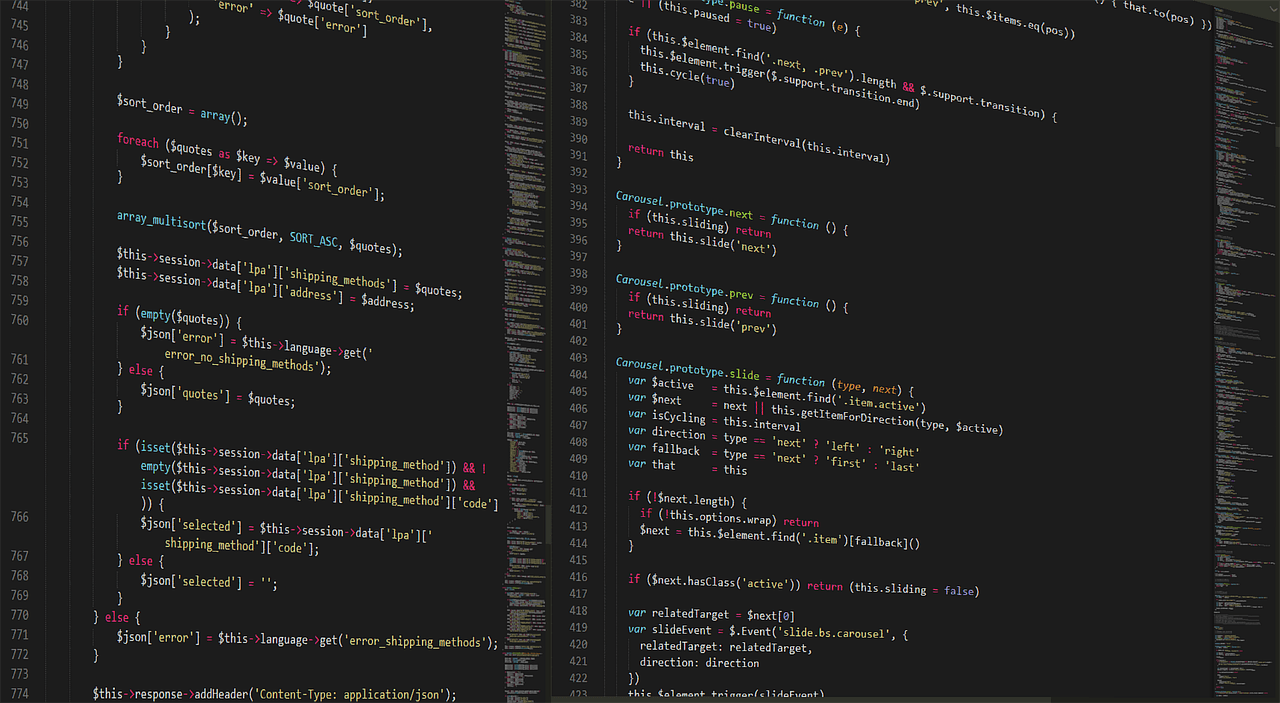Back in the mid-90s, Netscape and Microsoft were duking it out for dominance in the emerging browser market. Netscape took another path, eventually becoming Mozilla. But the company did make an enormous contribution to the future of the internet.
Developed in a mere 10 days by Netscape programmer Brandan Eich, JavaScript let early web users interact with page content, rather than simply viewing it.
Not to be confused with Java, JavaScript — or plain ol’ JS — is now the most common programming language for website development, used by a vast majority of developers and websites.
All of today’s major web browsers are built to execute JavaScript.
This widespread adoption has spawned more than 20 major frameworks and 80 popular libraries to support various use cases. The total number of JS libraries and frameworks is in the tens of thousands! Anyone can create them to facilitate different aspects of web development.
Technically speaking, libraries are collections of JS functions a developer can use as needed. Frameworks determine the conventions and structure of how JavaScript is applied to the entire website. But which ones should you learn to level up your coding game?
Let’s take a look at some of their pros and cons, starting with the most common.
Disclaimer: JavaScript developer opinions vary on which are best, and your learning should focus on your use case and career goals. While we hope this lights up discussions, we are not responsible for any feuds that arise from this video.
The big 3 (plus jQuery)
The three biggest players on the JS landscape are Angular, React and Vue. These are built on the model–view–viewmodel (or MVVM) architecture, and changes synchronize and appear instantly in the view. Alongside the big three, we also need to mention jQuery, which is very common and used in specific cases.
Angular
- angular.io
- Released September 14, 2016
- Current version: 11.1.0 (January 20, 2021)
Angular pros
Developed by Google, the Angular framework has been around long enough that there is reliable employment for the Angular developer. Many developers also appreciate the ability to customize directives and inject dependencies.
Angular cons
Developers aren’t a fan of Angular’s steep learning curve, which can be made more challenging by numerous version changes.
React
- reactjs.org
- Released May 29, 2013
- Current version: 17.0.1 (October 22, 2020)
React pros
React is maintained by Facebook, and developers who have mastered the React library also enjoy a robust job market. They’re able to crank out code quicker, thanks to React’s no-nonsense document object model (or DOM) interface. They also appreciate the unidirectional data flow, making it easier to isolate and work on child elements.
Out of the box, React provides many advanced dependencies that might be hard to find in another UI library community. React-router, Redux, you name it. Developers love those helpful modules that make their lives easier. And you are welcome to choose whatever additional libraries you need. With tons of boilerplates available online already, there must be one that fits your needs.
—Jen Wang, Software Engineer
React cons
Learning React can be a tough proposition, deterring many would-be JS initiates. It's only a library, not a framework, so if you want to make a full fledged app with it, there are tons of options. But this also means there is no "clear" path. You need to figure out everything yourself. It might leave early users struggling to find a clear development path for their projects.
React also has a couple of other cons, such as a rapid release schedule, meaning you need to keep up. It also uses JSX to extend JavaScript syntax, which not everyone likes.
Vue.js
- vuejs.org
- Released February 2014
- Current version: 2.6.11 (Dec 13, 2019)
Vue pros
Developers love the Vue framework’s reactivity. It features a two-way data stream enabling better communication between HTML blocks. Another plus is Vue’s easy integration with other applications and frameworks.
Vue cons
With great reactivity comes a tendency to overuse that feature and bog down what should be an easy project.
jQuery
- jquery.com
- Released August 26, 2006
- Current version: 3.5.1 (May 4, 2020)
jQuery pros
Technically a library, jQuery doesn’t require much in terms of resources and expertise to create stunning animations and special effects. It’s lightweight, compatible with every major browser, and very straightforward to learn. Plus, there’s ample documentation for most APIs and edge cases. Learning jQuery is like a history lesson in JavaScript.
jQuery cons
jQuery is used in over 70% of websites - but it’s a large library to include. Part of this is because it has extensive polyfills to support older browsers. Many new websites are abandoning jQuery and some devs argue it’s becoming obsolete.
It’s also considerably slower than CSS when it comes to animations. CSS animations are great and can do a lot these days.
If you need something slightly more complex and interactive, you may need to use JavaScript, and jQuery makes it easier to do. Without jQuery, you’d have to deal with all sorts of compatibility issues and programming from scratch.
Notable libraries & frameworks
With mastery of one or more of the big three plus jQuery, the savvy developer should consider learning some of the niche JavaScript libraries and frameworks. There are so many to choose from, but here’s a few you might want to explore.
Ember.js
- emberjs.com
- Released December 8, 2011
- Current version: 3.24.0 (December 28, 2020)
Ember is a framework beloved for its flexibility and an inspector that simplifies debugging. Yet its uber-steep learning curve leads many developers to avoid it altogether.
Backbone.js
- backbonejs.org
- Released October 13, 2010
- Current version: 1.4.0 (February 19, 2019)
A vast, well-organized library, Backbone is easy to learn, customize and integrate with other applications. But that can be a drawback. Backbone might make it difficult to define models, and determine what code is needed and where to add it.
Polymer
- polymer-project.org
- Released June 24, 2019
- Current version: 3.4.1 (Apr 30, 2020)
Developers give the Polymer library a thumbs-up for its ease of use, flexibility with code and data flow, and overall high performance. However, with those perks come limitations on tools for calculated attributes.
It is the absolute leading-edge technology of web components, and while it might not be natively well supported, this will lay the foundation for the next generation of websites
Meteor
- meteor.com
- Released January 20, 2012
- Current version: 2.0 (January 20, 2021)
The Meteor framework is a solid choice for the inexperienced developer, due to its ease of use, vast packages and libraries, and super-smooth communication.
On the flipside, server-side rendering isn’t possible without a third-party package (for now). And support and native libraries are limited.
Mithrill
- mithril.js.org
- Released May 3, 2018
- Current version: 2.0.4 (August 18, 2019)
A fast and lightweight framework, Mithrill gets high marks for its broad feature set and easy learning curve. But its small API and limited functions have drawn complaints.
Express.js
- expressjs.com
- Released November 16, 2010
- Current version: 4.17.1 (May 25, 2019)
By allowing your web server to use JavaScript on both the front and back ends, the Express framework supports a lean development process that’s manageable for a single person.
However, the learning curve can get steep once you start sorting through its single-threaded framework, middleware and code organization.
Next
- nextjs.org
- Released October 25, 2016
- Current version: 10.0.2 (November 18, 2020)
Next is a framework that attracts fans with its automation and easy setup, as well as its support for universal JavaScript code. Its opinionated, black-and-white structure can leave some developers griping about extensibility, though.
Which one will you learn?
One thing is certain, JavaScript is an important language for front-end web developers in the new year and beyond. If you have a favorite JavaScript library, framework, environment or tool, you've got a great place to start building your JS mojo.
Efficiently deliver better results
When you use the Hub from GoDaddy Pro, suddenly there’s more time in your day to focus on what matters most. Forget about juggling admin tasks. Reclaim your time and use it to make clients feel like the center of your universe.






